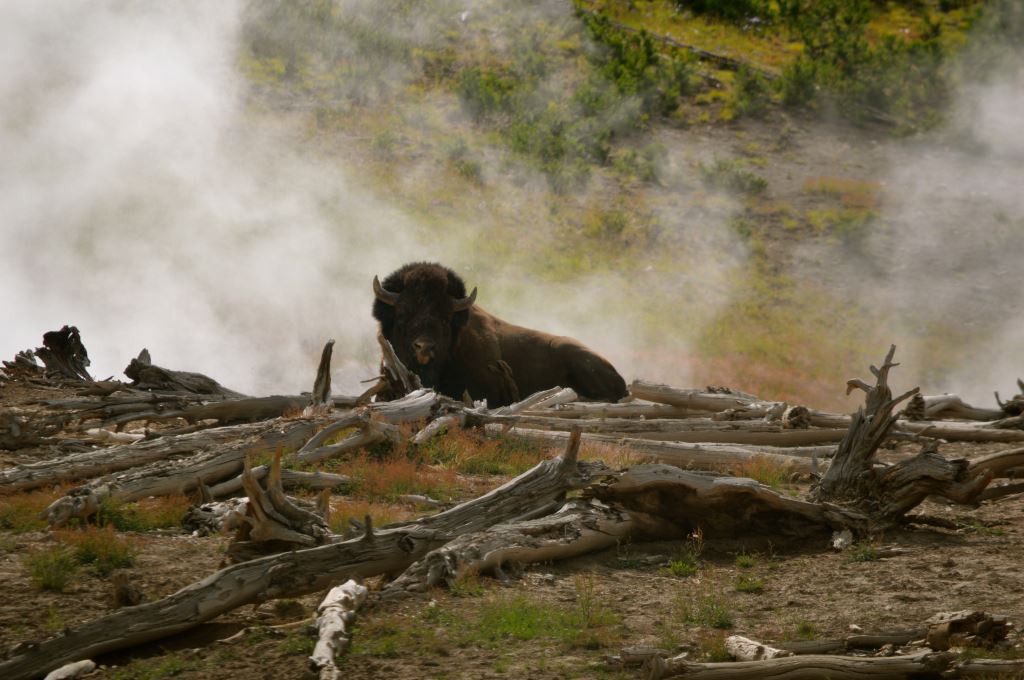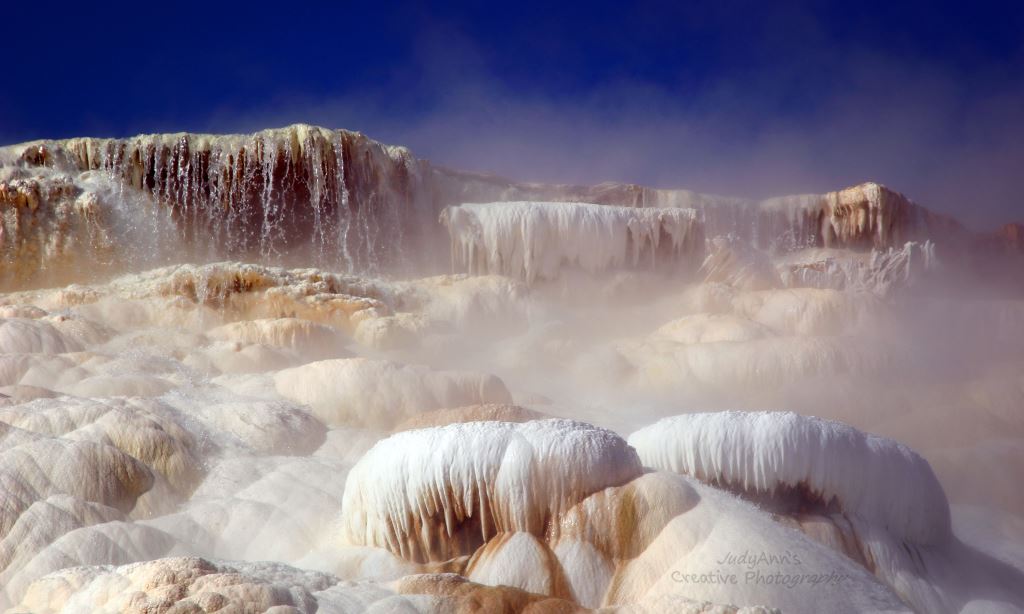In the northwest corner of the Territory of Wyoming, about half way between the Mississippi River and the Pacific Ocean, and in the same latitude as the State of New York, the grand Rocky Mountain system culminates in a knot of peaks and ranges enclosing the most remarkable lake basin in the world. From this point radiate the chief mountain ranges, and three of the longest rivers of the Continent—the Missouri, the Columbia, and the Colorado.

On the south are the Wind River Mountains, a snow-clad barrier which no white man has ever crossed. On the east is the Snowy Mountain Range, and the grand cluster of volcanic peaks between it and Yellowstone Lake. On the west is the main divide of the Rocky Mountains. On the north are the bold peaks of the Gallatin Range,[2] and the parallel ridges which give a northward direction to all the great tributaries of the Missouri from this region.
Set like a gem in the centre of this snow-rimmed crown of the continent, is the loveliest body of fresh water on the globe, its dark-blue surface at an elevation greater than that of the highest clouds that fleck the azure sky of a summer's day, over the tops of the loftiest mountains of the East. Its waters teem with trout, and the primeval forests that cover the surrounding country are crowded with game. But these are the least of its attractions. It is the wildness and grandeur of the enclosing mountain scenery, and still more the curious, beautiful, wonderful and stupendous natural phenomena which characterize the region, that have raised it to sudden fame, and caused it to be set apart by our national government as a grand national play-ground and museum of unparalleled, indeed incomparable, marvels, free to all men for all time.
Evidences of ancient volcanic action on the grandest scale are so abundant and striking throughout the lake basin, that it has been looked upon as the remains of a mammoth crater, forty miles across. It seems, however, to have been rather the focus of a multitude of craters. "It is[3] probable," says the United States geologist, Dr. Hayden, with his usual caution, "that during the Pliocene period the entire country drained by the sources of the Yellowstone and the Columbia was the scene of volcanic activity as great as that of any portion of the globe. It might be called one vast crater, made up of a thousand smaller volcanic vents and fissures, out of which the fluid interior of the earth, fragments of rock and volcanic dust, were poured in unlimited quantities. Hundreds of the nuclei or cones of these volcanic vents are now remaining, some of them rising to a height of 10,000 to 11,000 feet above the sea. Mounts Doane, Longford, Stevenson, and more than a hundred other peaks, may be seen from any high point on either side of the basin, each of which formed a centre of effusion."
All that is left of the terrific forces which threw up these lofty mountains and elevated the entire region to its present altitude, now finds issue in occasional earthquake shocks, and in the innumerable hot springs and geysers, whose description makes up so large a portion of this book of wonders. Nowhere else in the world can the last-named phenomena be witnessed on so grand a scale, in such limitless variety, or amid scenes so marvellous in beauty, so wild and unearthly in savage[4] grandeur, so fascinating in all that awes or attracts the lover of the curious, the wonderful, the magnificent in nature.
